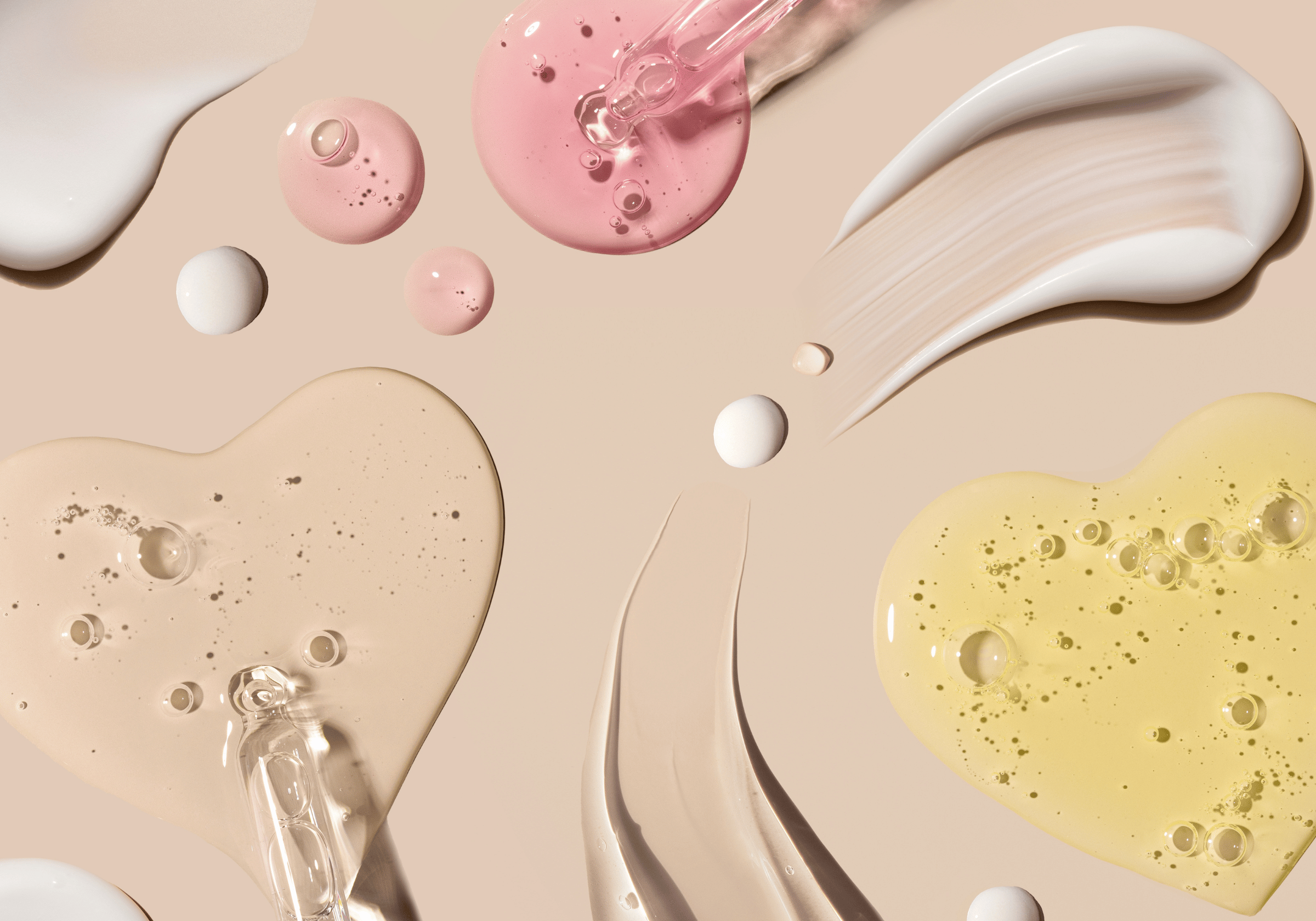Navigating the world of makeup can feel like traversing a minefield of confusing claims and potentially harmful ingredients. Mineral makeup has emerged as a popular alternative, promising cleaner formulas and skin-friendly benefits. But is it truly the answer to achieving flawless skin without compromising your health? This article dives deep into the science behind mineral makeup, exploring its potential benefits for various skin concerns like acne, rosacea, and aging, while also shedding light on the potential risks associated with certain ingredients. We'll empower you to make informed choices and embrace a truly clean beauty routine.
Table of Contents
- Defining Mineral Makeup: What It Is (and What It *Should* Be)
- The Rise of Clean Cosmetics: Why Transparency Matters
- Ingredient Spotlight: The Powerhouse Minerals in Your Makeup
- The Nasty List: Ingredients to Avoid in Conventional Makeup
- Titanium Dioxide: The Mineral Makeup Controversy – Weighing the Risks and Benefits
- Mineral Makeup for Specific Skin Types: Does It Deliver?
- Mineral Sunblock: Can Your Makeup Replace Your Sunscreen?
- Becoming an Informed Consumer: Decoding Labels and Choosing Clean Brands
- Application Tips: Maximizing the Benefits of Mineral Makeup
- Conclusion: Is Mineral Makeup Right for You?
- Frequently Asked Questions (FAQs)
Defining Mineral Makeup: What It Is (and What It *Should* Be)
True mineral makeup is formulated with finely milled, inert minerals sourced directly from the earth. These minerals typically include zinc oxide, titanium dioxide, mica, and iron oxides. The defining characteristic of clean mineral makeup is the absence of synthetic dyes, fragrances, preservatives, oils, and other potentially irritating or harmful additives commonly found in conventional cosmetics. However, the term "mineral makeup" is often misused, so it's crucial to scrutinize ingredient lists.
The Rise of Clean Cosmetics: Why Transparency Matters
The clean cosmetics movement reflects a growing demand for transparency and safer alternatives in the beauty industry. Consumers are increasingly aware of the potential health risks associated with certain cosmetic ingredients and are seeking products that prioritize their well-being. This movement emphasizes ingredient transparency, ethical sourcing, and sustainable practices.
Ingredient Spotlight: The Powerhouse Minerals in Your Makeup
Understanding the benefits of key mineral ingredients is crucial for making informed choices:
Zinc Oxide: Acne Fighter, Sun Protector, and Skin Soother
Zinc oxide is a versatile mineral with a wide range of benefits for the skin. Its anti-inflammatory and antimicrobial properties make it effective in treating acne, reducing redness, and fighting bacteria. It also provides broad-spectrum UV protection, making it a valuable ingredient in mineral sunblock. Furthermore, zinc oxide helps soothe irritated skin and promote wound healing.
Kaolin Clay: Gentle Detoxification and Oil Control
Kaolin clay is a mild and gentle clay mineral that effectively absorbs excess oil and impurities from the skin. It helps control shine, minimize pores, and detoxify without causing irritation. Its gentle nature makes it suitable for sensitive and acne-prone skin.
Silk Powder: Achieving a Luminous, Natural Finish
Silk powder, derived from silk fibers, provides a luxurious and lightweight texture to mineral makeup. It reflects light beautifully, creating a soft, luminous finish. Silk powder also helps absorb excess oil and improve the overall texture of the skin, leaving it feeling smooth and silky.
The Nasty List: Ingredients to Avoid in Conventional Makeup
Knowing which ingredients to avoid is just as important as knowing which ones to embrace:
Talc: Asbestos Concerns and Respiratory Risks
Talc is a common ingredient used to absorb moisture and provide a smooth texture. However, talc deposits can be contaminated with asbestos, a known carcinogen. While cosmetic-grade talc is supposed to be asbestos-free, the risk of contamination remains a concern. Inhaling talc particles can also lead to respiratory problems. Learn more about talc and cancer risk.
Bismuth Oxychloride: The Irritant Lurking in Your Powder
Bismuth oxychloride is a pearlescent pigment that gives makeup a shimmery effect. However, it's a known irritant for many people, especially those with sensitive skin. It can cause itching, redness, and even breakouts.
Silicones: Pore-Clogging Culprits and Environmental Concerns
Silicones are synthetic polymers that create a smooth, silky texture and can temporarily fill in fine lines and wrinkles. However, they can also trap oil and bacteria, leading to clogged pores and inflammation. Furthermore, silicones are not biodegradable and can contribute to environmental pollution. Learn more about siloxanes in cosmetics.
Parabens and Phthalates: Endocrine Disruptors and Potential Health Hazards
Parabens and phthalates are preservatives and plasticizers commonly found in conventional cosmetics. They have been linked to endocrine disruption, meaning they can interfere with the body's hormone system, potentially leading to a range of health problems, including reproductive issues and increased risk of certain cancers. Read more about endocrine disruptors.
Titanium Dioxide: The Mineral Makeup Controversy – Weighing the Risks and Benefits
Titanium dioxide is a common ingredient in mineral makeup, valued for its sun-protective properties and ability to provide coverage. However, concerns have been raised about the potential health risks associated with inhaling titanium dioxide particles, particularly in powder form. The International Agency for Research on Cancer (IARC) classifies titanium dioxide as "possibly carcinogenic to humans" when inhaled. While the risk is primarily associated with occupational exposure, it's important to be aware of the potential risks, especially when using loose mineral powders. Some individuals may also experience skin irritation from titanium dioxide, regardless of particle size (nano or non-nano). Consider opting for cream or pressed powder formulations to minimize inhalation risks.
Mineral Makeup for Specific Skin Types: Does It Deliver?
Acne-Prone Skin: Finding Relief and Preventing Breakouts
Mineral makeup can be beneficial for acne-prone skin if you choose the right formula. Look for non-comedogenic products with zinc oxide and kaolin clay, and avoid ingredients like bismuth oxychloride and silicones.
Rosacea: Calming Redness and Reducing Irritation
Mineral makeup can provide gentle coverage for rosacea without exacerbating redness or irritation. Opt for fragrance-free formulas with zinc oxide and avoid potential triggers like alcohol and synthetic dyes.
Mature Skin: Enhancing Radiance Without Compromising Health
Mineral makeup can provide a natural-looking finish for mature skin without settling into fine lines and wrinkles. Look for formulas with hydrating ingredients like silk powder and avoid heavy, cakey textures.
Sensitive Skin: Gentle Formulas That Won't Trigger Reactions
Mineral makeup's simplified ingredient list can be beneficial for sensitive skin. Choose fragrance-free, hypoallergenic formulas and avoid dyes, preservatives, and alcohol.
Mineral Sunblock: Can Your Makeup Replace Your Sunscreen?
While mineral makeup containing zinc oxide and titanium dioxide offers some sun protection, relying solely on it is insufficient. The level of protection depends on the concentration of minerals and the thickness of application. For adequate sun protection, apply a dedicated broad-spectrum mineral sunscreen with an SPF of 30 or higher before applying makeup. Reapply sunscreen every two hours, especially if you're sweating or swimming.
Becoming an Informed Consumer: Decoding Labels and Choosing Clean Brands
The key to navigating the world of mineral makeup is to become an informed consumer. Learn to read ingredient lists carefully and research unfamiliar ingredients. Resources like the Environmental Working Group's (EWG) Skin Deep database and PubMed can provide valuable information. Look for brands that are transparent about their sourcing and manufacturing practices and that prioritize clean, ethical ingredients.
Application Tips: Maximizing the Benefits of Mineral Makeup
Apply mineral makeup with a light hand using a fluffy brush. Build up the coverage gradually, focusing on areas that need more attention. Avoid rubbing or tugging at the skin. Use circular motions to buff the minerals into the skin for a natural-looking finish.
Conclusion: Is Mineral Makeup Right for You?
Mineral makeup offers a potentially healthier alternative to conventional cosmetics, especially for those with sensitive skin or specific skin concerns. By understanding the potential benefits and risks, reading labels carefully, and choosing products from reputable brands committed to clean ingredients, you can make informed decisions that support your skin's health and your overall well-being.
Ready to experience the difference of truly clean mineral makeup? Explore the Hylan Minerals collection and discover the purity your skin deserves.
Frequently Asked Questions (FAQs)
Are mineral makeup good for skin?
It can be, depending on the ingredients and your skin type.
Can mineral makeup cause breakouts?
Yes, certain ingredients can clog pores.
Is mineral makeup safe?
Generally safer than conventional makeup, but always check the ingredient list.
Can mineral makeup irritate skin?
Yes, some ingredients can cause irritation.
What is the best mineral makeup for mature skin?
Look for hydrating and lightweight formulas.
Is mineral makeup good for sensitive skin?
Yes, if you choose fragrance-free and hypoallergenic options.
What are mineral makeup brands?
Research brands thoroughly to ensure they align with your clean beauty values.
References
1. International Agency for Research on Cancer (IARC). "Titanium Dioxide." IARC Monographs on the Evaluation of Carcinogenic Risks to Humans, vol. 93, 2010.
2. Environmental Working Group (EWG). "Skin Deep Cosmetics Database."
3. Draelos, Z. D. (2010). Cosmetics in dermatology. Clinics in Dermatology, 28(6), 627-634.
4. Becker, L. C., Bergfeld, W. F., Belsito, D. V., Klaassen, C. D., Marks, J. G., Shank, R. C., ... & Snyder, P. W. (2007). Final report on the safety assessment of talc. International Journal of Toxicology, 26 Suppl 3, 1-35.
5. Burnett, C. L., Bergfeld, W. F., Belsito, D. V., Hill, R. A., Klaassen, C. D., Liebler, D. C., ... & Andersen, F. A. (2011). Final report on the safety assessment of Bismuth Oxychloride. International Journal of Toxicology, 30 Suppl 2, 34S-43S.
6. Schneider, S. L., & Deckner, G. J. (2018). A review of the safety of cosmetic ingredients. Cosmetics, 5(1), 2.
7. Sambandan, D. R., & Ratner, D. (2011). Sunscreens: an overview and update. Journal of the American Academy of Dermatology, 64(4), 748-758.






